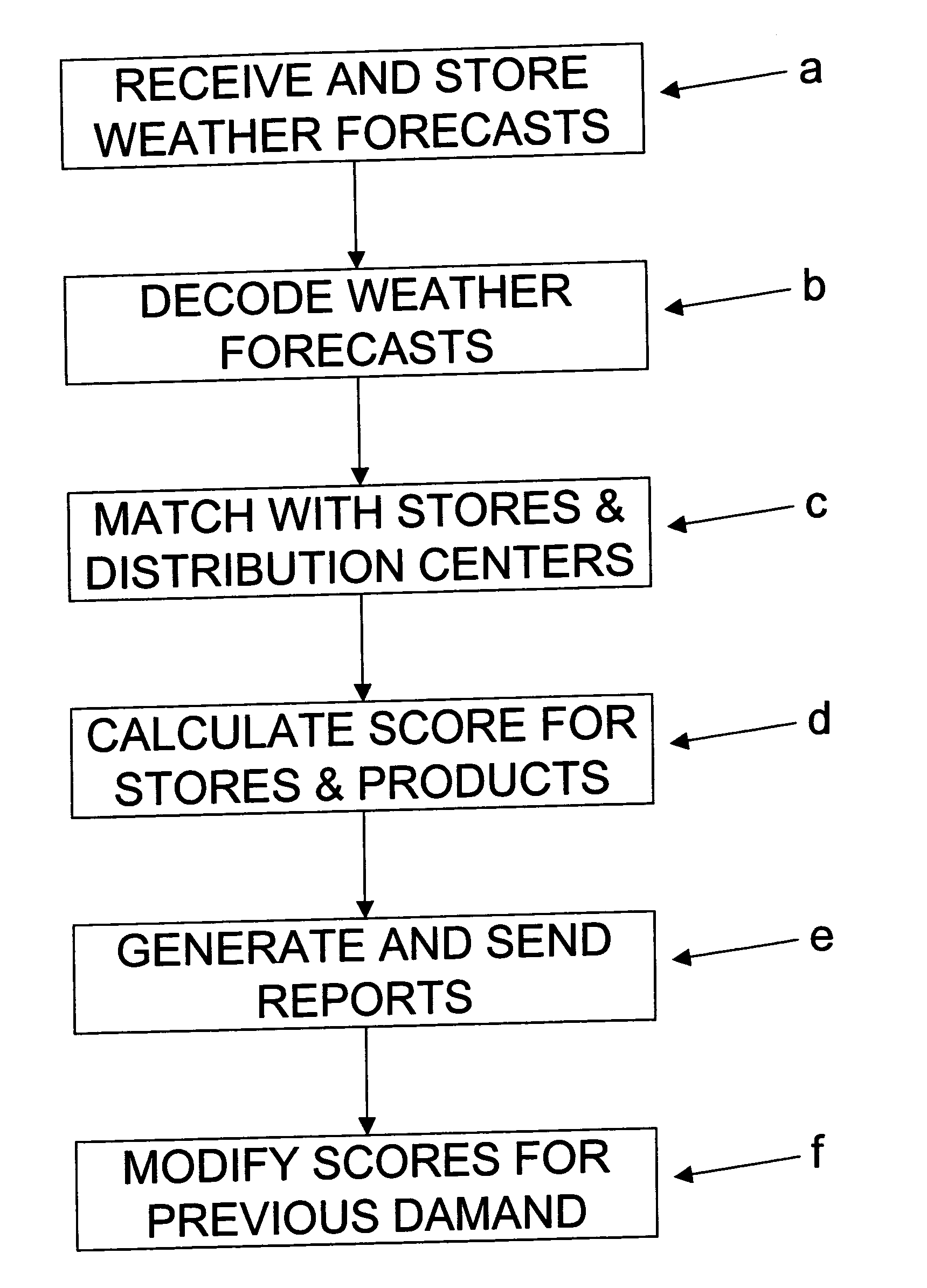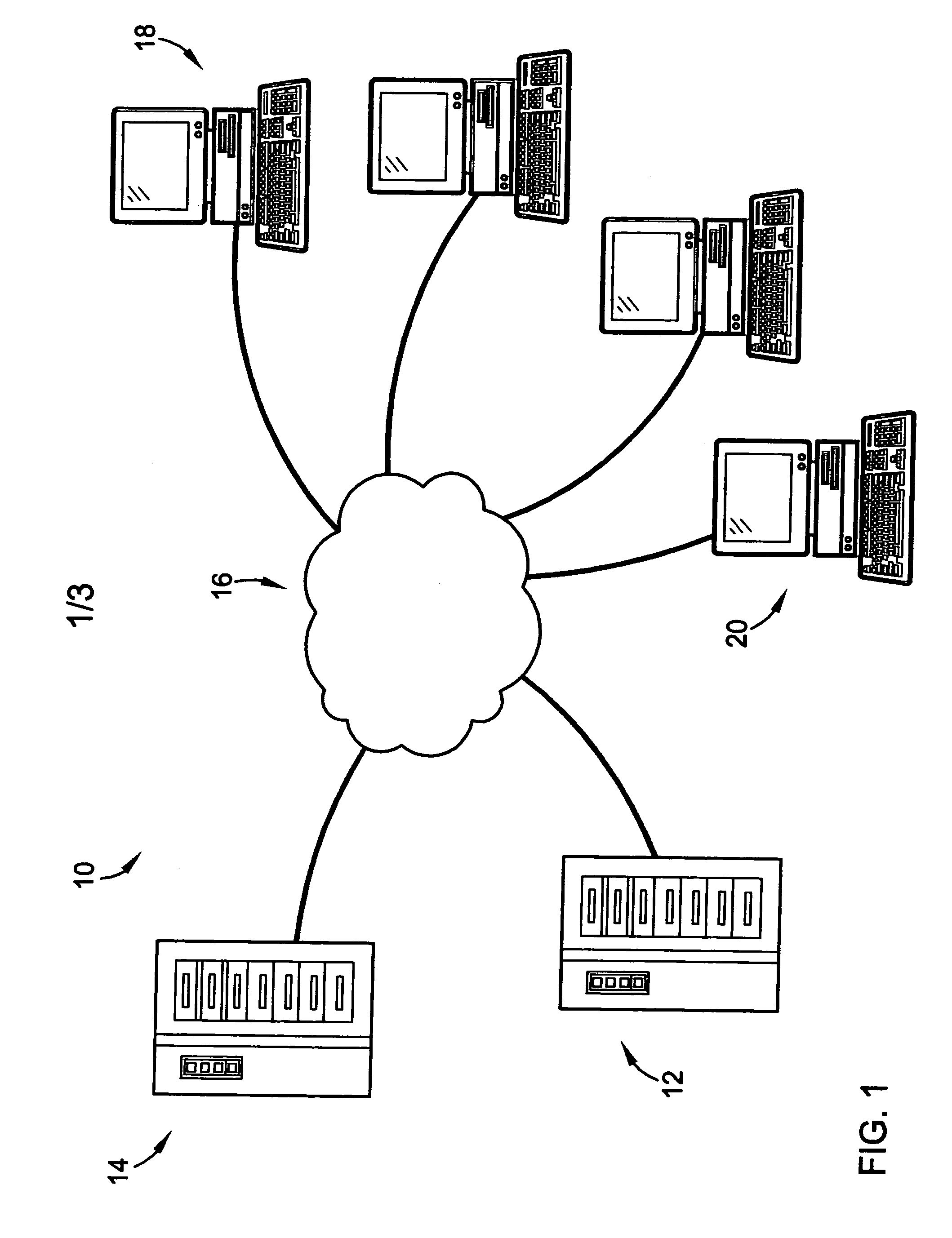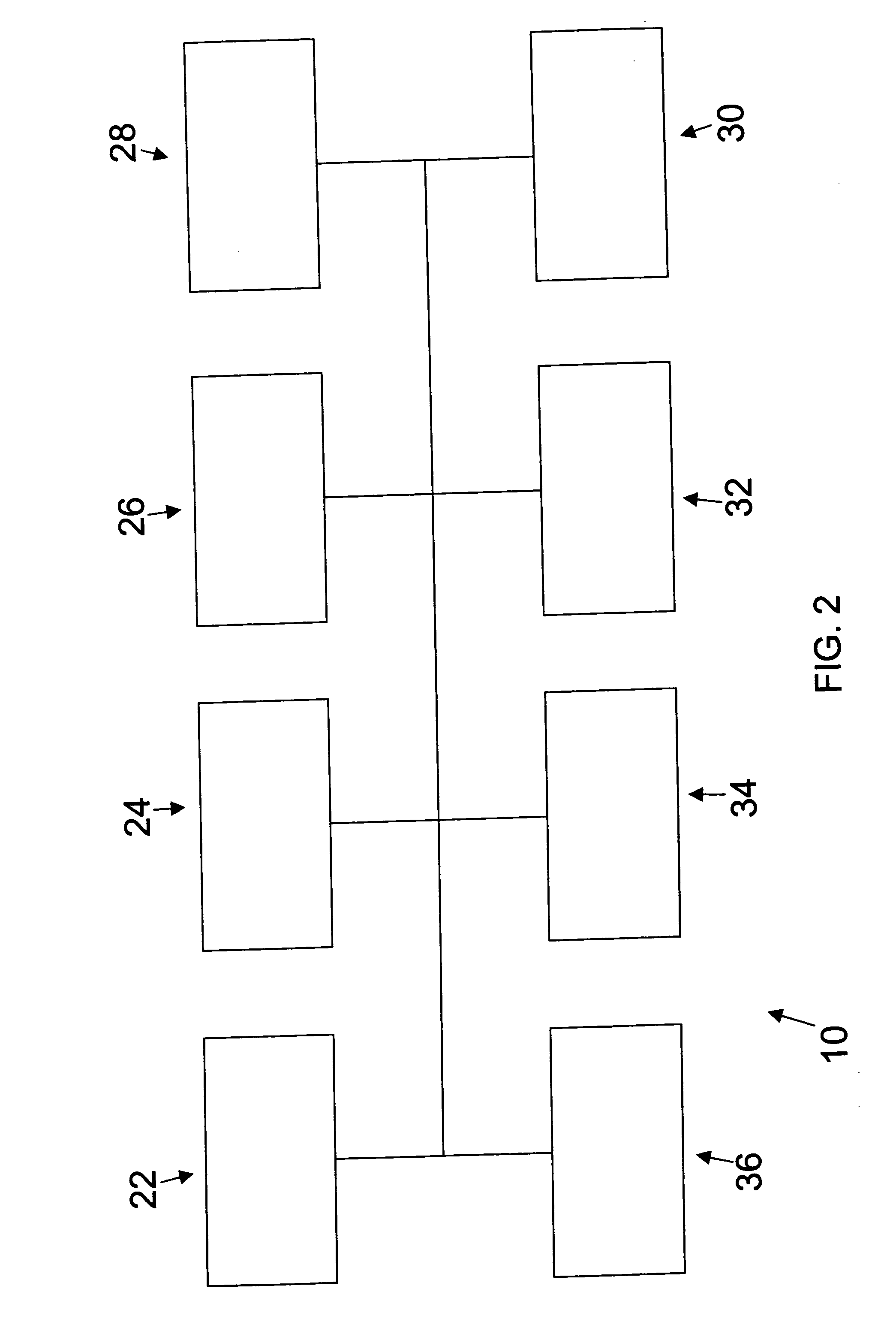Sales forecast system and method
a technology of forecasting system and sales forecasting, applied in the field of retail store management system, can solve the problems of unfavorable product sales, unsatisfactory sales, unsuitable products with irregular demand, etc., and achieve the effect of efficient management and stocking of stores, avoiding overstocking, and increasing the accuracy of scores over tim
- Summary
- Abstract
- Description
- Claims
- Application Information
AI Technical Summary
Benefits of technology
Problems solved by technology
Method used
Image
Examples
Embodiment Construction
[0023] Referring to FIG. 1, the preferred system 10 and method in accordance with a preferred embodiment of the present invention are preferably implemented with use of computer equipment 12 to receive weather data and make sales forecasts for one or more products using the weather data. More specifically, a manufacturer or distributor of the products is expected to use the system 10 and method to generate a sales forecast for each product at each of a plurality of stores based on the weather data that applies to each store. The manufacturer may then pass the sales forecasts onto any interested parties, such as the stores or distributors and / or wholesalers associated with each store, in an effort to ensure the stores retain sufficient stock of the products to meet the sales forecast. The distributors and / or wholesalers may use the sales forecasts to ensure that they have sufficient stock on hand to supply the stores. The manufacturer may also use the sales forecasts to plan manufact...
PUM
 Login to View More
Login to View More Abstract
Description
Claims
Application Information
 Login to View More
Login to View More - R&D
- Intellectual Property
- Life Sciences
- Materials
- Tech Scout
- Unparalleled Data Quality
- Higher Quality Content
- 60% Fewer Hallucinations
Browse by: Latest US Patents, China's latest patents, Technical Efficacy Thesaurus, Application Domain, Technology Topic, Popular Technical Reports.
© 2025 PatSnap. All rights reserved.Legal|Privacy policy|Modern Slavery Act Transparency Statement|Sitemap|About US| Contact US: help@patsnap.com



